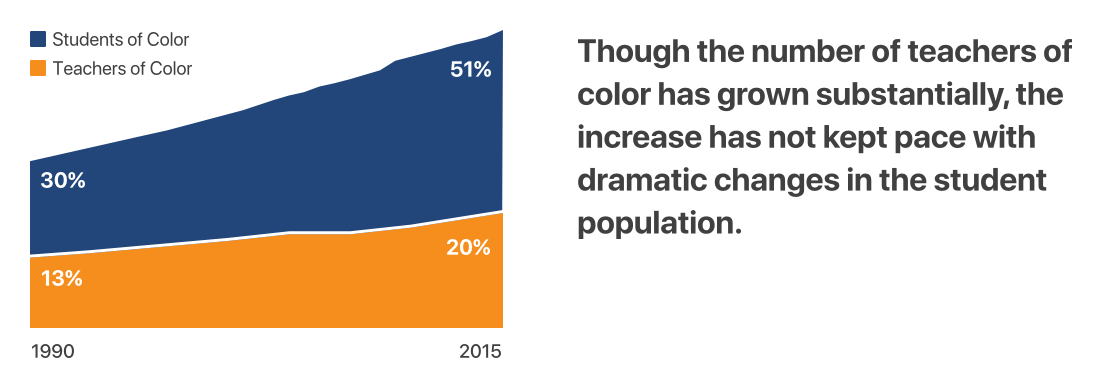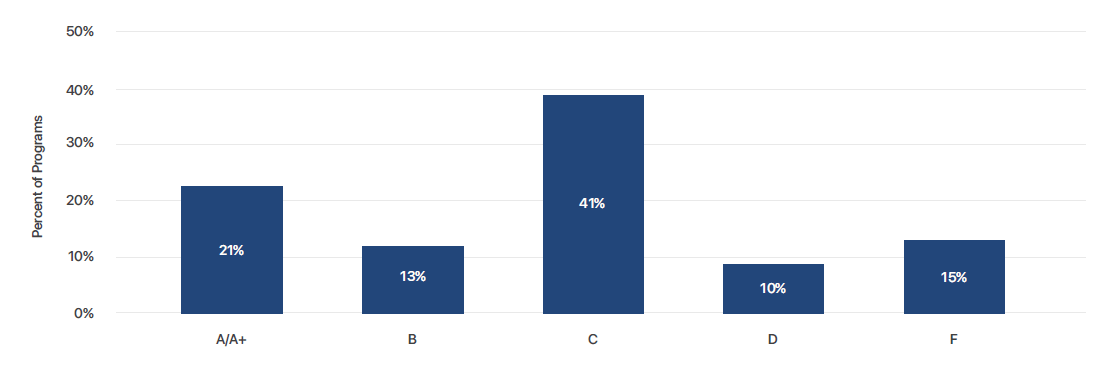Evaluation relies on four data inputs:
-
Teacher preparation program enrollment demographics sourced from Title II National Teacher Preparation Data and provided by educator preparation programs
-
State teacher workforce demographics sourced from U.S. Department of Education, National Center for Education Statistics, National Teacher and Principal Survey
-
Core-based statistical area (CBSA) demographics sourced from the U.S. Census Bureau database
-
County demographics sourced from the U.S. Census Bureau database
Data at the time of release reflects the academic years for the three most recent Title II releases.
Methodology in Brief
It is important to note that this standard uses the word "diversity" only to refer to racial and ethnic diversity. Other measures of diversity in the teacher workforce are also important, but are not the focus of this iteration of the Program Diversity standard. In addition, this evaluation uses the racial and ethnic categories defined by the US Department of Education, the source of the majority of the data used here. The categories are: white (non-Hispanic), Black or African American, American Indian or Alaska Native, Hispanic (of all races), Hawaiian Islander or other Pacific Native, and two or more races. For purposes of this evaluation, all individuals who identify themselves in a category other than non-Hispanic white are considered to be persons of color. For all data, the total number of individuals who are persons of color is divided by the total number of individuals whose race or ethnicity is reported to determine the percentage of persons of color.
Teacher preparation program data
Enrollment data are obtained from Title II National Teacher Preparation Data reports. Programs may also provide more recent data. To reduce random fluctuations, enrollment numbers data are combined from the three most recent school years from which data are available. The total number of enrolled students reported in racial or ethnic categories other than non-Hispanic white over those three years is divided by the total number of students whose race or ethnicity is reported to determine the percentage of persons of color enrolled at the program.7
State teacher workforce data
The demographic composition of the state teacher workforce is obtained through the U.S. Department of Education, National Center for Education Statistics, National Teacher and Principal Survey (formerly the School and Staffing Survey). In instances where state-level data is not available through the survey, demographic information is sourced from documentation published by the state.8
Local demographics data
Under the standard, institutions are compared against their core-based statistical area (CBSA), which are metropolitan and micropolitan areas defined by the U.S. Census Bureau. CBSA designations are obtained through a lookup using the institution's county. For institutions outside of a CBSA, we use the demographic data for the residing county. All demographic data are obtained from the U.S. Census Bureau database. Of note, this metric relies on the demographics for the entire CBSA population, as opposed to just the student-aged population, to provide a more balanced measure.
Calculations under the standard
As explained in full under the Scoring Rubric section, our analysis is based on a comparison between program enrollment and, separately, the state teacher workforce and local area demographics (CBSA). Programs receive full credit if they meet or exceed the diversity of the comparison population.9 Programs receive partial credit if they approach (less than 5 percentage points lower) the diversity of the comparison population.10





 16
16
 4
4
